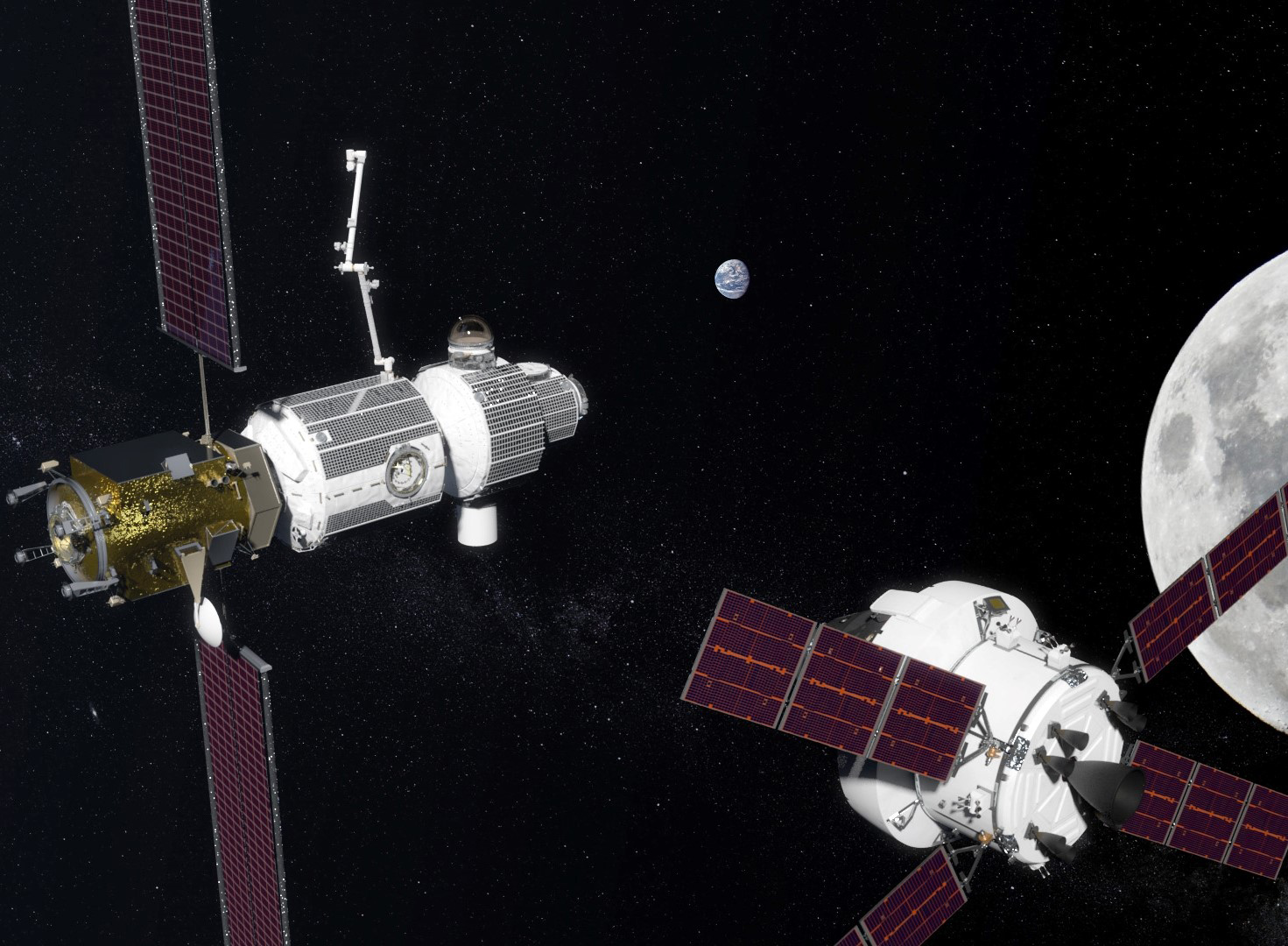As NASA’s Gateway keeps popping up in the news, it is worthwhile to explain what Gateway is and how it fits into the overarching plan for deep space exploration. Gateway is a moon-orbiting space station that will serve as a staging point for missions to the lunar surface, for scientific collaboration, for commercial exploration, and for destinations beyond the moon in deep space. Elements of the Gateway will be launched over time using NASA’s Space Launch System, which is powerful enough to launch crew on the Orion spacecraft as well as substantial cargo.
When docked with Orion, Gateway will be a human-tended research facility supporting commercial and international partners.
When launched, Gateway will be a national asset like SLS and Orion. Together, these three assets enable industry and international partnerships that will advance U.S. leadership on and around the moon.
So why do we need Gateway now, when we didn’t need it to land on the moon nearly 50 years ago? The answer is that in the Apollo era, the goal was getting Americans to the moon and returning them safely back to Earth as a way of demonstrating technical and societal superiority to the Russians —end of story. Achieving that goal really did end the story of deep space exploration for half a century. Now, however, we have a more ambitious goal—sustained exploration of deep space.
The next time we go to the moon, we intend to stay there. We aim to make use of resources on the moon for fuel, oxygen and construction materials. To be successful, we need to do more scouting and testing beforehand so we pick the most resource-rich sites and know that our equipment will work as designed. From Gateway we can operate prospecting robots, look for caves where humans could live, and collect samples to return to Earth. It is an ideal platform for staging supplies and preparing for crewed missions to the moon, and it is a safe haven if crews have to abort a surface mission. Because it is in an orbit around the moon that can be changed, Gateway also offers access to far more of the Moon than even several “direct to the Moon” missions would do.
In addition to the moon, we plan to go to Mars and other destinations in our solar system. Gateway helps with these, too, as it enables us to develop and test the systems needed. Deep space is different from low Earth orbit, where the International Space Station resides, and we’ll need more advanced radiation shielding and solar electric propulsion as well as proven deep space transportation and habitation capabilities. Gateway is where we can study the effectiveness of these technologies before we send a crew to Mars.
One of the great things about Gateway is that it enables partnerships with industry and international space agencies. NASA has recently issued a “Request for Information” to industry, soliciting ideas for the commercial use of Gateway. Commercial companies are already working on landers and resource extraction and utilization techniques. Cargo can be launched through commercial resupply contracts like the Space Station is today. The European, Canadian and Japanese space agencies are preparing a lunar sample return mission in the 2020s that uses the Gateway as a halfway point. And international partners are also interested in joining with NASA to make use of Gateway for development of long-term environmental control and life support systems.
Gateway is still a few years from launching, but it is already enabling industry and international partnerships. By moving forward with Gateway, SLS and Orion, the U.S. is will advance American leadership and partnership in deep space.
Read More:
- ⯈ NASA Seeks Partnership with US Industry to Develop First Gateway Element
- ⯈ NASA Seeks Ideas for Commercial Uses of Gateway
- ⯈ NASA sees strong international interest in lunar exploration plans


